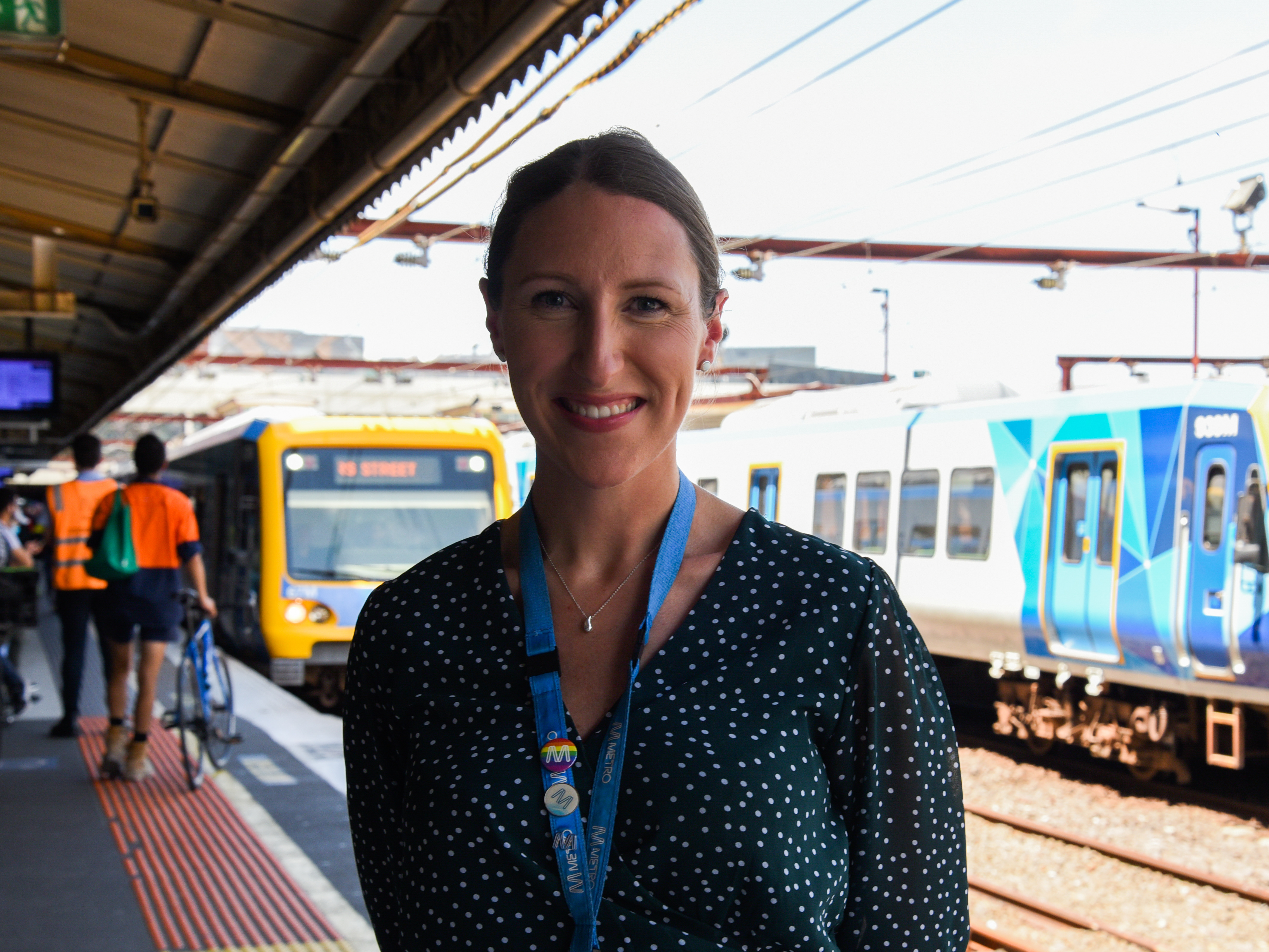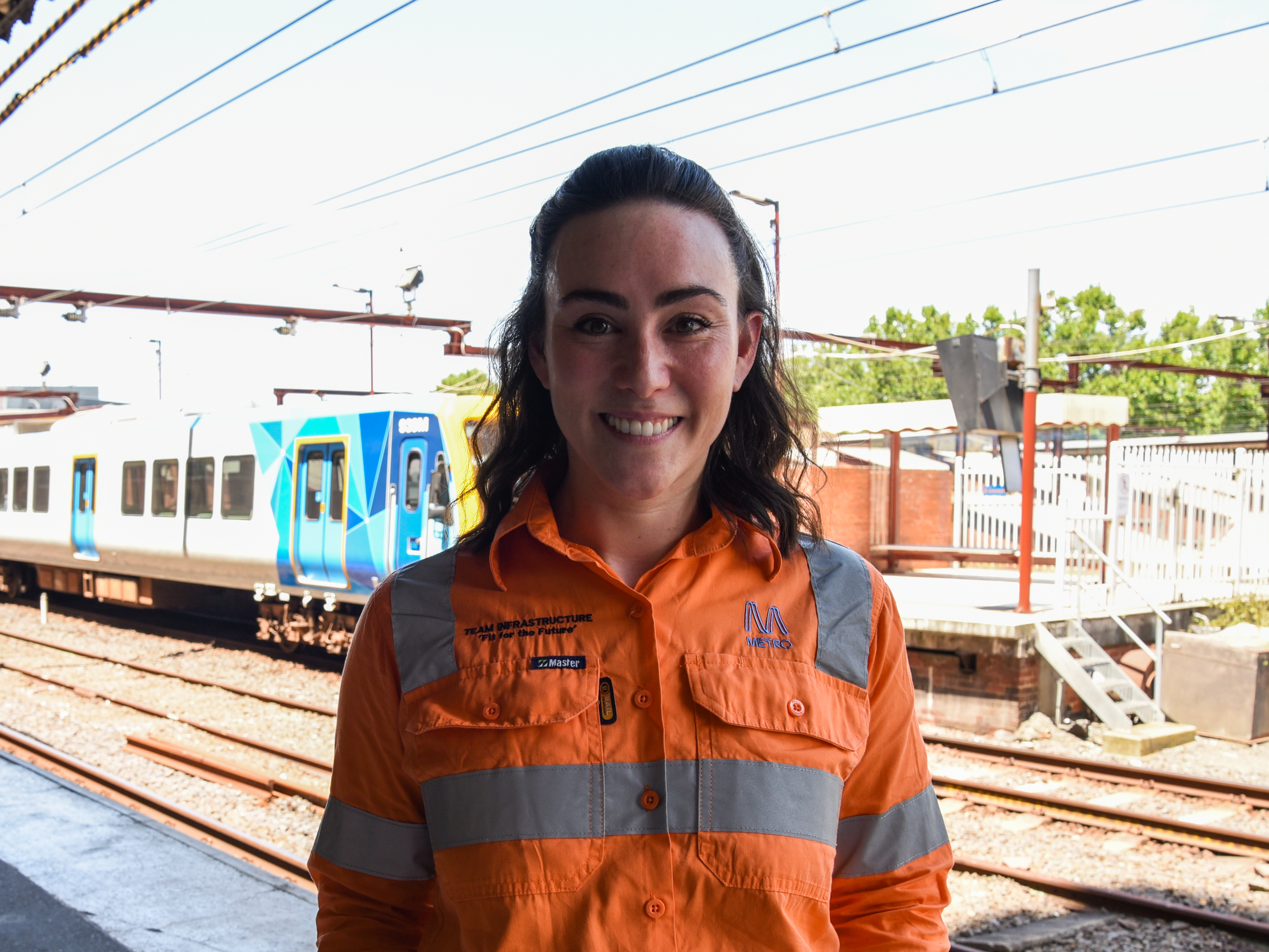Celebrating International Women’s Day with Metro’s leaders
Celebrating International Women’s Day with Metro’s leaders
At Metro, it’s essential to reflect the community that it serves. This means committing to a more diverse and inclusive workplace.
In the past 10 years, Metro has more than doubled the number of female employees, achieving its goal of women making up 30 per cent of employees by the end of the 2021/22 financial year.
Traditionally the rail industry has been a male-dominated one, but that’s changing, and it’s changing fast.
Last year, a major milestone was reached, the number of women in train driving roles reached 500, and has now risen to 541. In 2009, when Metro began operating the trains in Melbourne, there were only 26 female drivers.
During the pandemic the ability to work from home and not always stick to the standard office hours became a reality, and it’s a lesson that has carried on.
A major push for Metro is to bring more women into leadership roles, not just by progression through the organisation but by recruiting women from other industries who can bring their experience and knowledge into the exciting and fast-paced world of rail.
Three of Metro’s female leaders give their perspectives on the rail industry, how it’s changed and what can be offered to women looking for a new career.
Phillipa Thomas – Metro’s Head of Train Services
As Metro’s Head of Train Services, Phillipa Thomas leads a team of 1300 train drivers that transport Melburnians around this city.
With more than 450,000 passenger trips a day, her team makes sure that Melbourne keeps moving.
“I’m originally from the UK where I had been working in event management. After moving to Melbourne, I did some temp admin work at Metro and ten years later I haven’t left.”
After some great roles across various departments in the business, she got the opportunity to head up Train Services.

“The breadth and diversity of roles I’ve had whilst at Metro has been amazing. I think if you’d’ said to me 10 years ago you’ll be leading 1300 train drivers I’d say you’re crazy. It’s amazing to work for an organisation where you can see the difference your team make to the broader community, and this is so motivating.”
Ms Thomas says the rail industry has become much more attractive to women, and now that they are in the industry, we’ve got to keep them moving up the ladder.
“I think it’s about allowing women to have a voice and creating a space where everyone feels empowered to speak up with new ideas or questions no matter your gender, age or background. Sometimes it’s the person you’d least expect that can have the best idea and the best businesses embrace that.
“I can’t see myself leaving the railways. Once it’s in your blood you’re in for the long haul.”

Anne Howard – Chief Information Officer
As the CIO, Anne Howard oversees the technology that makes Melbourne’s trains run.
“I’d never been in rail prior to Metro, and it’s now been five years. For me I love the tangibility of seeing the results of your hard work. You walk onto a station and you can see what you’ve accomplished. That’s my team. They’re really contributing.”
Ms Howard says that for women to achieve their goals in the rail industry, the way forward is simple but not easy.
“What I’ve found is that once you show a real interest in the work, and you actually understand the problems and challenges, then you can earn your stripes.
“Once you make that genuine effort to reach out and find the problems that need solving, you’ll find the resistance disappear.”
She says one area of focus for the future to ensure more women can reach leadership roles is more coaching and mentoring.
“I think we need to have the support in place we can help people reorientate once they enter the industry and provide and anchor point for them.
“As a leader myself, I keep my ear to the ground to know when the interventions are required to help people in my team.
“Diversity brings different perspectives to conversations, and that’s not just about gender, it’s all types of diversity, including bringing in people from a non-rail background.
“I believe we must make it safer to have a complete conversation rather than have them loaded with assumed knowledge. It breaks the mould and removes the impediment of doing things the way they’ve always been done.”
Kelly Douglas – Metro’s Structure’s Delivery Manager
Across Melbourne’s rail network there are 42 thousand structural assets such as gantry’s and bridges that cross the train tracks, it’s Kelly Douglas’ job to ensure they are maintained and renewed to the highest standard.
Prior to joining the rail industry, Ms Douglas spent her early career as a FIFO worker in Western Australia, as an engineer in the mining industry.
“The majority of my career has been in the operational and maintenance side I’ve now been in Metro’s infrastructure team for three years.
“I became an engineer because I wanted to make a positive difference to the country through infrastructure.”

She says that one of the main benefits to having more women and diversity join the engineering field is that it brings more voices into the conversation.
“We are seeing it shift. We’re seeing more diverse candidates in leadership roles. Having people move up the ranks is a very positive sign of change.
Within Ms Douglas team the gender breakdown is nearing 50/50.
“My advice to young women is to focus on your work, and the respect will follow.
“I’m seeing more women with children join the industry, and they are really showing us how to properly balance work and life. And we’ve seen this as an especially important aspect of life since the pandemic.”
She says that companies like Metro have embraced the idea of not being tied to a desk.
“If you hire good people and trust them to do the job, while letting them fulfill their family commitments, it’s a better workplace for everyone.”